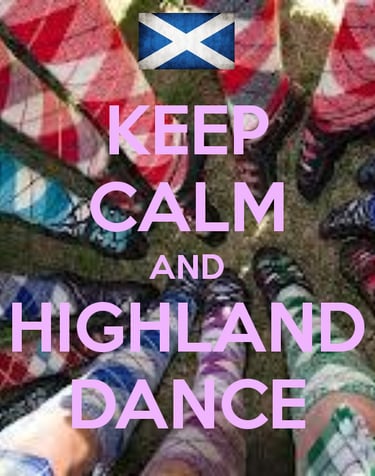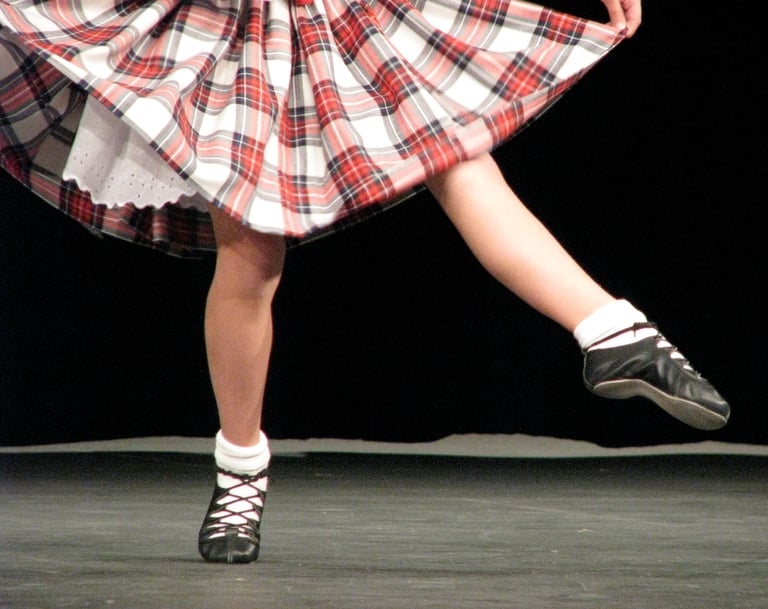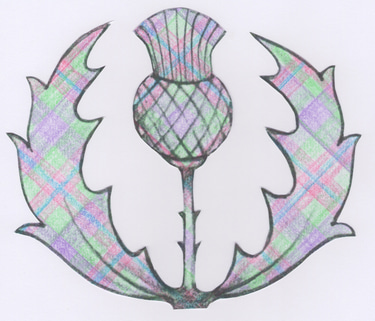History
Each dance represents a piece of Scottish History in the story it tells.
Highland Fling
The Fling is the youngest of the 4 'highland' dances, considered to be based on the rutting movements of a stag's antlers. Traditionally, ancient warriors performed this dance on small round shields (called targs) which they carried into battle.


Sword Dance
The most well-known Highland dance dates back to King Malcolm Canmore and the 1504 battle of Dunsinane.
After beating one of MacBeth's chiefs, Malcolm crossed his sword over the defeated opponent's sword (to form the sign of the cross) and danced in exultation.
Sean Triubhas
Pronounced "shawn trews" in Gaelic, it translates as "old trousers". After the 1745 rebellion at Culloden, the wearing of plaid was forbidden (under penalty of death). Scots were forced to wear trousers but they hid their highland footwork under balletic arms preferred by the English. The dancer's clap signifies the overthrowing of English rule and Fling-like steps are danced in triumph.
Reels
Legend has it that the reel originated with well-wishers waiting for the minister to arrive at the kirk for a wedding on a cold day. The chilly group danced as a way to keep warm.
Lilt * This is a courting dance originally performed by girls as they were choosing their future huband from the crowd.
Flora MacDonald's Fancy * After the Battle of Culloden, Prince Charlie was on the run from the English. Flora MacDonald danced for Charlie, luring him to a boat where she disguised him as Betty Burke and they escaped to France.
Wilt Thou go to the Barracks Johnnie? * This is a military dances to recruit for the Scottish army and maintain stamina once enlisted.
Blue Bonnets Over the Border * When the men went off to battle, their wives danced until they could no longer see their husband's blue bonnet over the hill.
Irish Jig * This was meant to be a parody of an Irish washer-woman who is agitated due to the fact her husband has been out all night spending his pay at the pub while she was left at home to do the cleaning.
Sailor's Hornpipe * A common dance to many parts of the British Isles named for the instrument used to play the tune. It became popular among sea-farers and the foot actions portray many of the sailor's daily routines.



